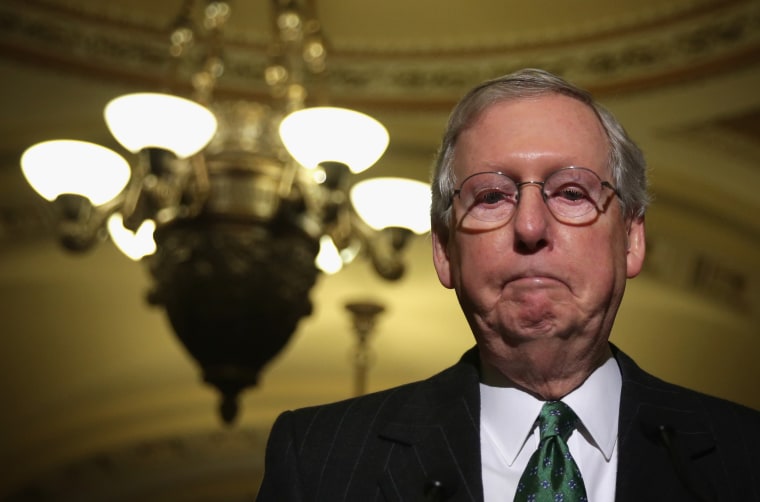Here we go again.
With unresolved policy differences on issues ranging from immigration and children’s health insurance to disputes over domestic and military spending, Congress and the White House are lurching toward a government shutdown or yet another temporary funding resolution.
The perpetual inability of Congress to fulfill one of its prime responsibilities — funding the government by the start of each new fiscal year on October 1 — is giving federal agencies whiplash.
Year after year, the failure of Congress to do its job has eroded the ability of federal agencies to make prudent program, policy and management decisions on everything from national defense to the delivery of social services. The Department of Homeland Security, for example, repeatedly has had plans disrupted to strengthen cybersecurity defenses because of funding uncertainties.
The situation has gotten so out of hand that Congress and the White House may not settle on spending for this year by the time the president is scheduled to unveil his 2019 budget proposal in February.
This is no way to run a government.
Chronic budgetary uncertainty over the years has led agencies to postpone or scrap new programs and projects; prevented agencies from terminating unnecessary activities; resulted in lapses in public services; delayed the delivery of grants to states and localities; stopped agencies from entering into new private-sector contracts; and of course, wasted obscene amounts of taxpayer dollars.
Chronic budgetary uncertainty over the years has led agencies to postpone or scrap new programs and projects.
According to the Government Accountability Office, the Department of Veterans Affairs at one point delayed new maintenance projects on electrical and sewage systems at VA hospitals because funding would run out before completion of the projects. It also had to solicit bids on contracts a second time in order to redo environmental, architectural and engineering analyses.
Earlier this week, Marine Corps Gen. Joe Dunford, chairman of the Joint Chiefs of Staff, said another temporary funding bill means the Pentagon will go four months into fiscal 2018 at lower spending levels than 2017. “This is the ninth straight year with a continuing resolution,” Dunford said. “That lack of predictability and that lack of stability in the budget has not allowed us to most efficiently plan and use the resources available to us.”
Navy Secretary Richard Spencer was more direct, commenting in December that continued budget ambiguity since 2011 has cost his service a staggering $4 billion due to stalled acquisition programs and deferred maintenance. He said it also has resulted in operational inefficiencies and hurt troop readiness.
“We have put $4 billion in a trash can, poured lighter fluid on it and burned it,” Spencer said. “Four billion is enough to buy a squadron of F-35s, two Arleigh Burke-class destroyers, 3,000 Harpoon missiles. It’s enough money to buy us additional capacity that we need. Instead, it’s lost because of inefficiency in the ways of the continuing resolution.”
In the past 20 years, Congress has passed 112 continuing resolutions to keep agencies operating after failing to enact appropriations bills by the start of the fiscal year. And since 1995, there have been two significant partial government shutdowns, one that lasted 21 days from Dec. 16, 1995 to Jan. 6, 1996, and a 16-day closure that occurred in October 2013.
If this week’s brinkmanship results in a shutdown, hundreds of thousands of federal employees will be told they are nonessential and ordered not to come to work — and the American people will not get what they’ve paid for.
Temporary funding bills should be considered only as a last resort, not as a standard operating procedure.
One can expect regulatory agencies like the Food and Drug Administration, the Environmental Protection Agency and the National Highway Traffic Safety Administration to curtail enforcement activities, and the Centers for Disease Control and Prevention to cease some of its disease surveillance during one of the worst flu seasons in years. National Parks will close, passport applications will not be processed, small businesses will not receive financing and multiple services for veterans will be curtailed.
In addition, it has been estimated by S&P Global analysts that a shutdown would cost the economy about $6.5 billion a week. If it lasts an extended period of time, a shutdown could even slow the nation’s economic momentum.
There are legitimate differences of opinion about the appropriate role and scope of the federal government. These differences are magnified by extreme partisanship and policy and spending disputes that are real and difficult to resolve.
But the thought of a government shutdown should be an anathema to lawmakers across the ideological spectrum, and temporary funding bills should be considered only as a last resort, not as a standard operating procedure.
It is time for members of Congress to fix this badly broken budget and appropriations system. A reasonable place to start is to adopt a biennial budget and appropriations process to forestall the yearly battles and to provide greater certainty for agencies to plan and fulfill their missions.
This will require the courage to compromise, a tall order in the current environment. At the moment, neither Congress nor the White House — nor, for that matter, American voters — seem to understand or even acknowledge the negative consequences of our never-ending budgetary dysfunction. Maybe the stench of their tax dollars burning in a congressional trash can will catch the voters’ attention.
Max Stier is president and chief executive of the Partnership for Public Service.
